-
Posts
1346 -
Joined
-
Last visited
Content Type
Profiles
Forums
Events
Gallery
Posts posted by Nied
-
-
Maybe he's the new Conan O'Brien. NBC DID keep intellectual rights to the show.
At least they didn't cast Jay Leno.
-
Look on the bright side, the CFT will mentally prepare you for the coming eyesore in the form of the F35.
I don't get people hating on the F-35's looks. Sure the X-35 was ugly but how can you look at this and not say it's beautiful.
On a different note maybe living in Boston wont be that bad, I'm about 20 blocks from Fenway park and I just got to watch the B-2 that made the flyover for the Winter Classic make a long beautiful turn over my apartment. If I hadn't been as hungover as I am I might have thought ahead enough to have my camera ready.
::Edit:: and the Bruins win to top everything off. Nice!
-
Interrupting the Ace Combat talk again. Having watched this video of the first flight, I have to say with it's big oversized engines, gently curved wings, and weirdly shaped tail: the 787 is one odd looking duck.
I still maintain it must be some kind of forgery though
-
-
Last airshow I'm going to this year, and likely the last San Francisco Fleet Week I'll make it to for a while as my wife and I are moving back to Boston at the end of the month. I am glad I could get a good picture of the sneak pass over the bay, who's jelous of the GIB (guy in back) getting the incentive ride?
Had some others admiring the show as well (one of the other great little touches about Fleet Week in San Francisco):
-
Any thoughts on my questions regarding the swing-wing NATF, David?
Or anyone else for that matter

I can cover that one, or at least half of it. I have not seen any information on how the NATF would overcome the RCS concerns of a swing wing, there's very little detailed info on Lockheed's NATF proposal (and if you think that's bad just try finding info on the F-23N). It's even possible the info you want is classified.
As for why a swing wing was used in the first place, your surmise is pretty much correct. The only way to meet the Navy's landing speed, weight, and top speed requirements was to use a swing wing. The standard F-22 wing is fine for the speeds the Air Force lands at, but to get it on a carrier you need to go much slower which either requires adding various high lift devices (big flaps etc) or a swing wing. When you add those high lift devices to a folding mechanism for a fixed wing and you end up with a pretty heavy plane that likely would have too much drag to reach the speeds the Navy wanted.
-
-
I went to the Sacramento Capitol Airshow this past Sunday, and I realized that I'm getting incredibly spoiled as 5 out of the last 8 air shows I've been to have had the Raptor performing. It's almost becoming routine!
This is the first time I've tried shooting in RAW mode on my camera and I have to say the effect is subtle but the pictures are noticeably better looking.
P.S. Mustangs and Corsairs don't got nothin on the sound of a P-38.

-
Of course, but I'm just pointing out that the fuselage is a lifting body. With that percentage, it could act as a stabilizer to an extent. It pulls the lift closer to the center of gravity, reducing its ability to flip end over end in such cases, plus the FBW actively adjusts thrust vector so it doesn't.
1. You're greatly overestimating the amount of body lift the VF-1 could get, almost every area that creates lift on the F-14 hos something in the way or something to spoil the airflow on the VF-1 (the arms sit in the fuselage "tunnel" the wing gloves have their airflow disrupted by the upper intakes and the abrupt end they come to).
2. Even if they created any lift they would create the most at or near the lift for the wings so they couldn't provide any kind of stabilization.
3. And this is key: If it needs fly by wire to keep it in the air then it's not a stable design!
-
Well, of course. I used the F-18 as an example, because we all know how little effect it has... Or we all should.
Also, if you're discounting the VF-1's wing area being capable of lifting the plane, you've forgotten body lift. The upper fuselage looks like it would be capable of adding another 30-40% of the total lift needed to keep the plane level. The wings provide the rest, and the thrust to weight ratio is much higher than is needed for anything else.
It's not a matter of having enough lift it's a matter of where it's distributed. On the VF-1 nearly all the lift of the aircraft is concentrated on the wings, with no other surfaces to counter balance them, that means the slightest gust would send it flipping end over end if left to it's own devices. The only way for it to maintain level flight would be for the pilot, or a fly-by-wire flight control system, to constantly make control inputs to counter the natural instability of the design.
-
Well, they are canted out to about the same extent as the F/A-18's vertical stabilizers.
Looking at the VF-1, it's completely capable of flight. The wing area is large enough to produce lift enough to keep it in the air, not to mention body lift. It has thrust vectoring paddles. (The nozzle is before the "feet", making them paddles) It has elevons. (Thom, that's the term for Ailerons that act as Elevators, as well. I can't remember what they call what you're saying.) It has a flight computer and a form of fly-by-wire.
I'd say it's theoretically as stable if not more so than some of the planes we're currently fielding or have used. For example, its inspiration, the F-14 Tomcat. It had straight-vertical elevators, tailerons mounted below the wing plane, and a large space between the nacelles and fuselage, what little of it there was. With all of these, it's no wonder the plane always flew pointed 2 or so degrees up at "level" flight.
The tails on the VF-1 are canted out but not enough to create anything more than a negligible amount of lift (for reference the canted tails on the new Silent Eagle mod of the F-15 create a few hundred pounds of lift on a 44,000 pound aircraft) and certainly not enough to allow for stable flight. The aircraft you mention (the F-14 and F/A-18) both have fairly large horizontal stabs to balance their CG (although the Hornet is still tail heavy enough that in needs a fly-by wire system for stability). Since the VF-1 lacks any kind of horizontal stabilizer (besides the very small of lift from the vertical tails and ventral fins) it would have to rely on a fly-by-wire system to maintain level flight.
-
Can the C operate in that role? I completely discounted that. And India was probably the longest shot of them all, but the dynamics of the Indo-American relationship and India's regional environment makes a shift not out of the realm of possibility.
I heard that the US successfully tested both the F-14 and Baby Hornet on ski ramps (the E-2 as well) and the F-35 has a more favorable thrust to weight ratio, so I don't see why it shouldn't be possible. I'm fairly certain the UK is looking at doing the same thing if they purchase the F-35C.
-
India wants to go STOBAR? I'd assume only because of the Russian carrier connection?
The Vikrant is STOBAR too.
-
Well Japan and Korea just introduced their "helicopter destroyers", with the Ise being commissioned in two years time. I'd be surprised if they didn't upgrade these vessels to carry JSFs in the next decade. The only reason why Japan hasn't was it was needlessly provocative and there was no suitable aircraft to equip them with until now. The Koreans may well do the same in response.
The Indians bought the Admiral Gorshkov from the Russians a few years ago, and are planning to build the Vikraant class in the next decade. While they operate Russian aircraft, given the political drift between them and Moscow and the new level of political cooperation between them and Washington, its not outside the realm of possibility. Italy and Spain have formed an amphibious EU battlegroup and have organized their procurement to suit that task. The Italians design the Cavour with the JSF in mind, its doubtful they would commission a ship last year only to pull out now. The Spanish are about to launch the Juan Carlos I next year, and while its more of a helicopter carrier, it does have a ski-jump installed.
Really the only country that might give up carriers is Thailand. It might not be able to buy the JSF, but it doesn't need an anti-sub carrier either.
In addition to the five you mentioned the Australian Canberra class LHDs are going to have a ski ramp to support VTOL aircraft and the RAN has put in a (currently unfunded) request for a small number of F-35Bs for those ships. Given that they have a pretty firm order for 100 F-35As already it seems like a no-brainer to me. India isn't as likely a customer for the F-35B though, they seem to want to move to STOBAR or CTOL aircraft for their carriers, I would think the C model or Super Hornets would be more likely purchases for their carrier air groups if they were looking to buy American.
-
FAKE photo. (c'mon, look just above the base of the tail---it's obvious) (in addition to the photo's own caption)
It's a fake, but it's a fake straight from NASA who were going to fly the X-31 in that configuration before the funding fell through. The VF-1 would probably be unflyable without a good fly by wire system and thrust vectoring, but with those it shouldn't have much trouble (and the instability would make it incredibly manoeuvrable to boot).
-
RE: F-14 vs F-22 noise:
In 2001 the Andrews Airforce base show had both a Super Hornet and a Tomcat performing (unfortunately it was an ugly day so all we got was a few high speed passes from each) and I remember both planes being roughly as loud as each other. The Tomcat definitely had a deeper throatier note, while as David mentioned the Rhino makes a higher pitched ripping sound. Having said that the Raptor beats the Super Hornet (and by extension the F-14) in terms decibels hands down. I'd say it's near the B-1 in terms of noise.
As for the whooping noise David described, it's most noticeable when it's on the ground taxiing. The F-104 makes the same exact whooping sound when blipping the throttles, though the sound they make in the air is unlike any plane I've heard (the closest thing I can compare it to are the Alien fighters from Independence Day).
-
That Block Information help some.
I was wondering why they listed Skull One as a Block 1 when the VF-1S wasn't produced till later. Now of course I wonder where is it included in the VF-1 totals. Is it the 31st VF-1S or still one of the 5093 VF1A?
Gives new credence to my remanufacture theory.
It's interesting that they list block 6 production starting in 2009 rather than later. I had always assumed that those models went into production after the events shown in the TV show (to explain their absence). I gotta say they're explanation works pretty well too (most of the Block 6 and later models were assigned to ARMD platforms and other space installations, far away from the Macross's airgroup which was the focus of the show).
-
-
God damn that was a good movie!
The story of a man who finds his humanity by turning into an alien.
I saw it, I really enjoyed it... But I still want two questions answered...What kind of substance was in the cylinder that would act as both a fuel source and a mutagen that just happened to turn a human into an alien?
O.o
That bugged me too but as my wife pointed out
their technology is all based on their biology, it's not hard to imagine that the fluid was some kind of hyper-concentrated biotechnology, that would have incidental effects on other living creatures
Why Earth? How did it end up here?
They obviously had some kind of emergency, they may have gone to Earth because it was the nearest planet with a habitable biosphere.
-
I went to the Kinokuniya in SF's Japan town yesterday and didn't see it there. Has anyone seen copies in SF?
-
Well after three days of no issues I just experienced another outage. Same behavior as before, it didn't seem to last nearly as long as previous slowdowns though (that's a subjective impression though).
-
Yes, but potential for catapults, and having catapults, are quite different.
Well the French are buying the same design and their carriers will have catapults so I doubt the UK will have much trouble adding the same thing to theirs.
-
UK/RR stops development of JSF engine, likely to cancel orders for VTOL version of JSF. So what do they plan to do with the new VTOL carriers they're building?
http://www.telegraph.co.uk/news/newstopics...ter-engine.html
My understanding is that they're looking at installing EM catapults and buying the F-35C instead of the B.
Is this somewhat similar to the issue that Grumman had with the F9F Cougar?Like what is written here? Landing Condition Stall Problems
That's more of an asymmetrical stall leading to a spin. The_Woz's explanation is pretty spot on.
-
According to the book... The difference of a 1J is that, it's made by a Japan manufacturer, and so they have better QA (right). The overall performance is thus better (production excellence), and also with better software, better firearm controls and target locking, things like that.
Well I knew that the 1J was built in Japan, and as you pointed out the greater QC is likely BS (especially with the level of automation in production that we see in Macross). That just leaves the upgraded software and controls and as has already been mentioned the head. All of those are things that could be added to an existing fighter pretty easy outside of a factory.

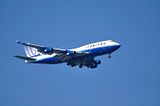
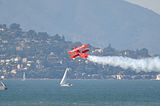
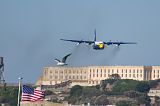
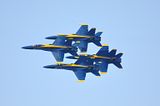
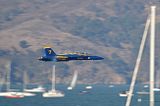
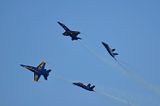

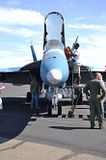

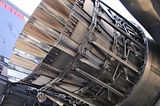
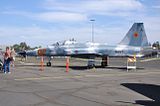
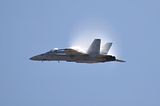
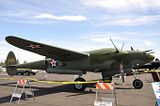

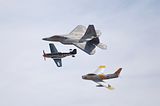
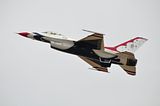
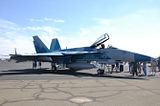
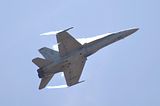
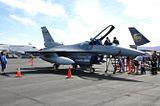
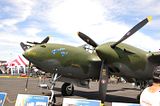
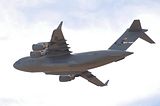
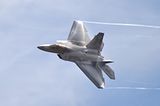
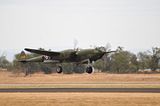
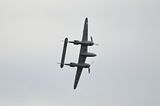

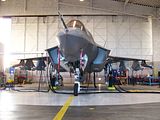
Aircraft Vs Thread 5
in Hall Of The Super Topics
Posted
Wow. If nothing else it's a real sharp looking plane.
I'm seeing all sorts of things that are going to cause it's radar signature to balloon beyond what you would think at first glance (there's still all kinds of small blade antennas and the IRST aperture isn't going to do them any favors). If I had to guess it would probably have a RCS somewhere between a Super Hornet and a JSF, and really that's not half bad. Props to the Russians for getting this thing airborne, I was convinced the most we'd ever see of the PAK-FA was some concept art and a promise that it'll fly "real soon" for the next 15 years.